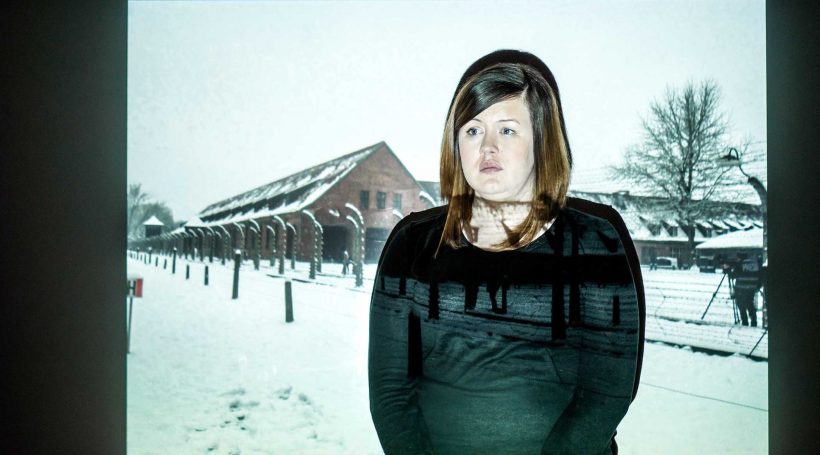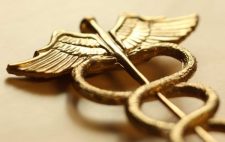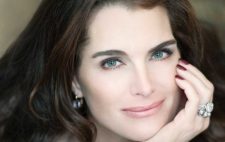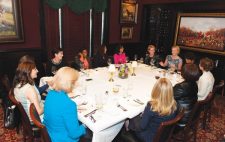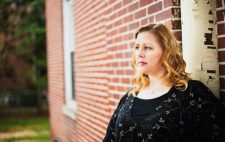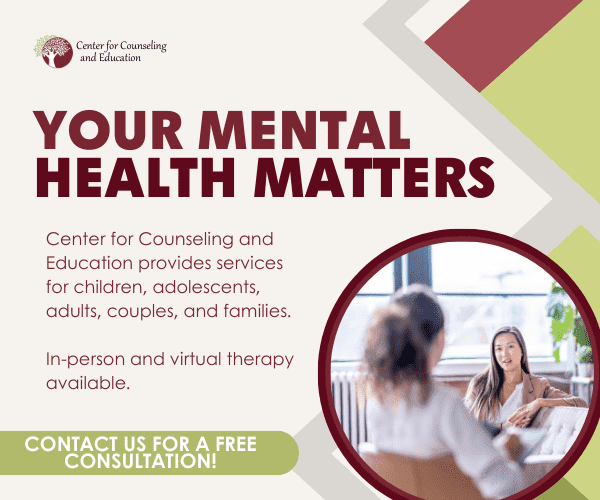When Bobbie Downs’ friends ask about her trip to Poland, she isn’t quite sure what to say.
“You come home, and people ask how your trip was,” she says. “You can’t say, ‘Oh, it was good,’ because it’s not. It wasn’t.”
Downs was one of 25 educators from around the world who traveled to Auschwitz for the 70th anniversary of the concentration camp’s liberation earlier this year. The trip was organized by the University of Southern California’s Shoah Foundation, an institute dedicated to preserving history through a video archive that contains more than 100,000 hours of survivor testimony on the Holocaust and the Rwandan, Cambodian and Armenian genocides.
The program Downs, 29, was selected for is called “Auschwitz: Past is Present.” Until recently, the Shoah Foundation’s work has focused on firsthand testimony, but as Holocaust survivors move into their mid- and late-80s, the institute is working to ensure that Holocaust education will long outlive the witnesses.
“The number of survivors is really dwindling, and my responsibility as a teacher is now so much larger than I ever thought about,” says Downs, a history teacher and principal of Burlington County Alternative Middle School. “This was really the last opportunity for these survivors to be together again. They’re in their 80s and 90s now, and they were children or young adults during the Holocaust. The next generation of students won’t have the ability to talk to someone who was there. So now we carry the responsibility to tell the stories.”
Downs and the other teachers, chosen through an international competition that required them to write essays and create a YouTube video, took part in a four-day professional development program ahead of the official commemoration ceremony. The educators attended workshops at the Museum of the History of Polish Jews in Warsaw, where they learned how to use the Shoah Foundation’s archives and how to teach about the Holocaust using those resources.
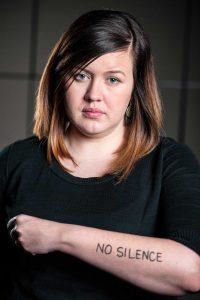 “Being at the museum was a really eye-opening thing, because it’s not just about the Holocaust,” Downs says. “It’s about Jewish culture and heritage thousands of years before the Holocaust and afterward. I think most of us, when we think about Polish Jews, think only about what happened to them during WWII. We don’t necessarily realize they were a group of people before and a group of people after. It changes your thinking on the context you want to put the Holocaust in for your students.”
“Being at the museum was a really eye-opening thing, because it’s not just about the Holocaust,” Downs says. “It’s about Jewish culture and heritage thousands of years before the Holocaust and afterward. I think most of us, when we think about Polish Jews, think only about what happened to them during WWII. We don’t necessarily realize they were a group of people before and a group of people after. It changes your thinking on the context you want to put the Holocaust in for your students.”
Downs had the opportunity to speak with a number of survivors at a reception following the 70th anniversary commemoration ceremony. Even for someone who was always passionate about Holocaust education, Downs says those conversations had a profound impact.
“You’re there with a survivor in the place where this happened, and you suddenly realize this is a person,” she says. “When we read something, it’s almost dehumanized; it’s just paragraphs in a text book. But here I am talking to somebody, and they’re speaking about the experience the same way I would talk about something in my childhood. It’s difficult to know what to say. You want to say something like, ‘Thank goodness you survived,’ but how do you say that? There’s just so much loss. Really all you can do is listen.”
Before leaving for Poland, Downs didn’t give much thought to the emotional response she might have during her tour of the camp and the ceremony. She’d visited the Dachau concentration camp during a high school vacation to Germany, and she assumed this trip would be similar.
“I was 16 when I went to Dachau, and I guess it didn’t really hit me then,” Downs recalls. “It was sort of just another tourist attraction on our trip. Before we left for Poland, the Shoah Foundation let us know they would have a psychologist from USC there to help us process it all. At first I thought, ‘Well that’s not really necessary,’ but there are emotions you have no idea you’re going to have.”
Downs says the tour of Auschwitz and the personal conversations she had with the camp’s survivors left her with some fears she found difficult to manage.
“I had a hard time when I got back,” she says. “I just kept thinking, ‘Oh my god, what if it happened here?’ Putting it in that context is almost impossible; the idea that people you know, people you love, could just be gone. I kept thinking about my nephews, how that separation would just be immediate. Before, it just felt like a part of history, but 70 years really isn’t that long. We are not at all far removed from the Holocaust, and that was a very frightening thought.”
Also frightening to Downs is the number of people across the globe who either know nothing about the Holocaust or have been given a Holocaust education based on false information. She believes it’s taken for granted that the Holocaust is a consistent part of most American school curricula.
“I lived in Egypt for a while, teaching there, and one of the things that was never OK with me is that it’s illegal to teach about the Holocaust in certain areas, in certain Muslim countries,” she says. “While I was there, I taught refugees from Sudan who’d never heard about the Holocaust. They were amazed that genocide is not just an African problem. If no one ever teaches you about what happened, I can understand that initial disbelief. But what’s terrifying to me is that anyone could deny something so massive. I just don’t understand that.”
Ignorance about the Holocaust, or outright denial that it occurred, is more common globally than one might expect. A 2014 survey conducted by the Anti-Defamation League in more than 100 countries revealed some startling statistics. Of the tens of thousands surveyed worldwide, only 54 percent of respondents had heard of the Holocaust. Moreover, 32 percent of those who had heard of it said they believe the Holocaust is “either a myth, or has been greatly exaggerated.”
Downs says the best way to combat denial and doubt about the Holocaust is to “rehumanize” its victims and help students establish a personal connection to the events. She does this with her own students by using the Shoah Foundation’s visual history archive and by organizing an annual field trip to Washington, D.C.’s United States Holocaust Memorial Museum.
“I think people have a hard time finding common experiences with anyone who’s different,” Downs says. “Add to that another time period and another country, and it’s even harder. I think a lot of students look at it and think, ‘That’s not a part of my personal history.’ Well it is, because you’re human. It applies to all of us because it’s part of our collective human experience, and that’s what I want the students to learn.”
Downs says the overarching message she embodies when she teaches about the Holocaust can be summed up by the words of Paula Lebovics, a Polish woman who immigrated to America after being liberated from Auschwitz when she was 11 years old. Lebovics was one of the survivors who spoke at the commemoration ceremony.
“I’ll never forget what she said,” Downs says. “She could’ve come away from this tragic experience and never talked about it, tried to forget it. Instead, 70 years later she stood up and looked at all of us and said, ‘Silence is not an option.’”

